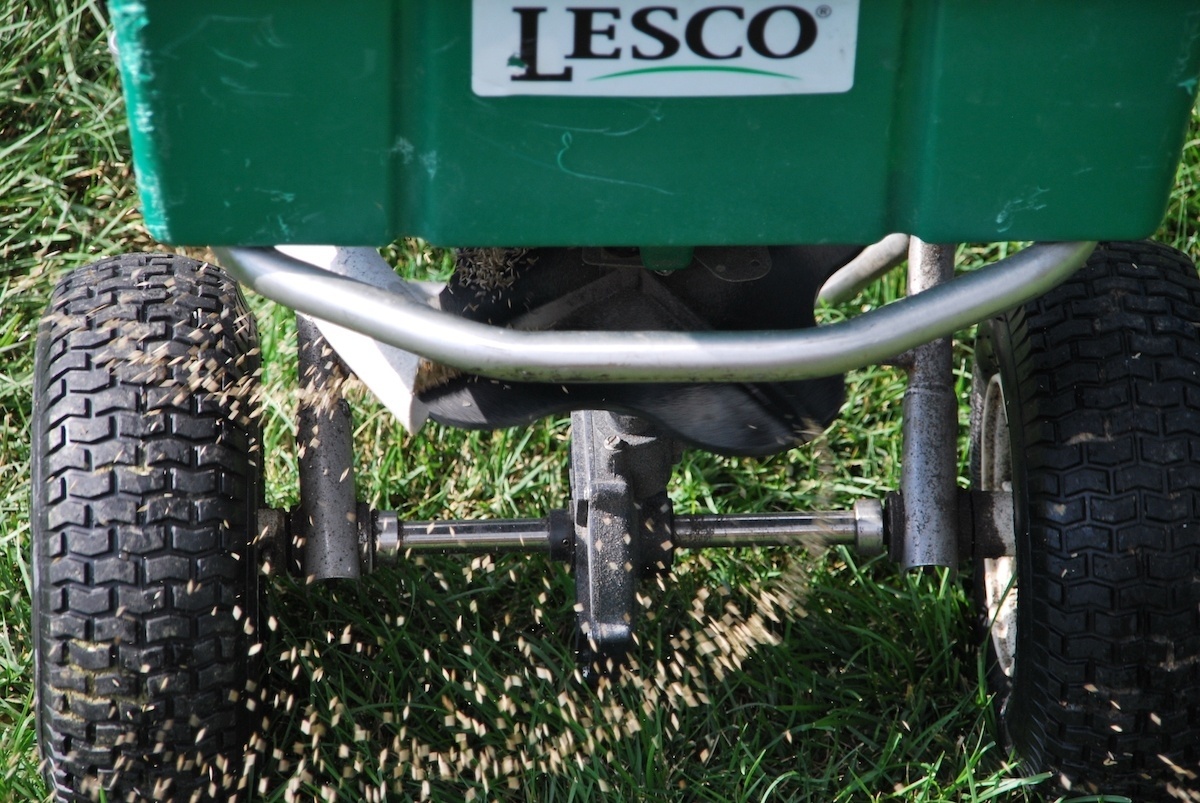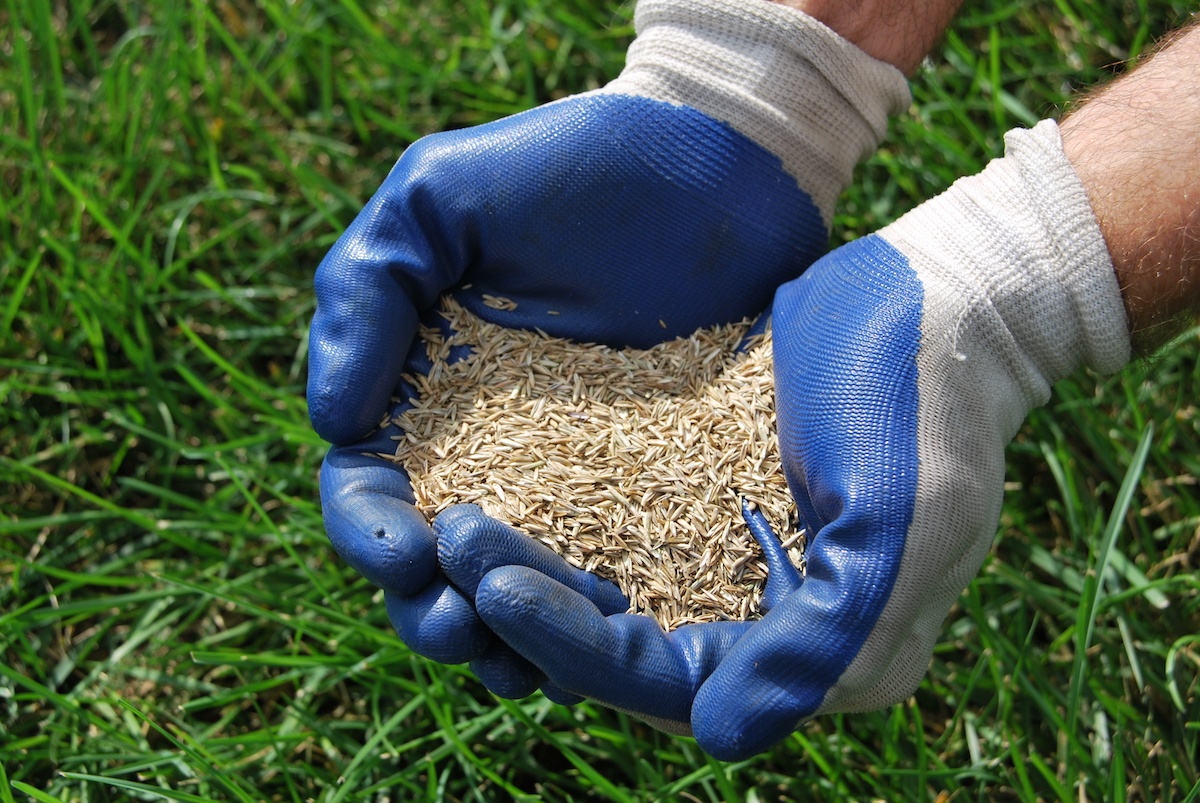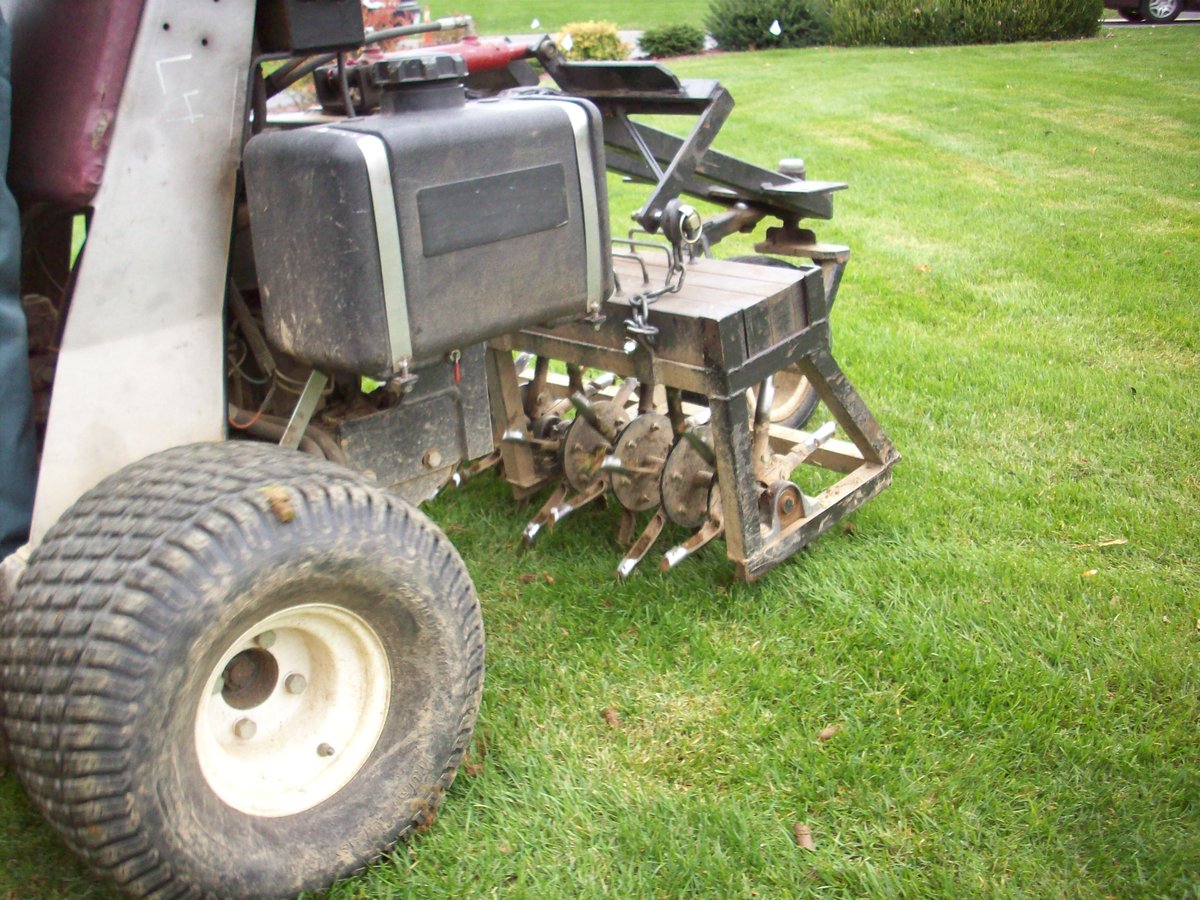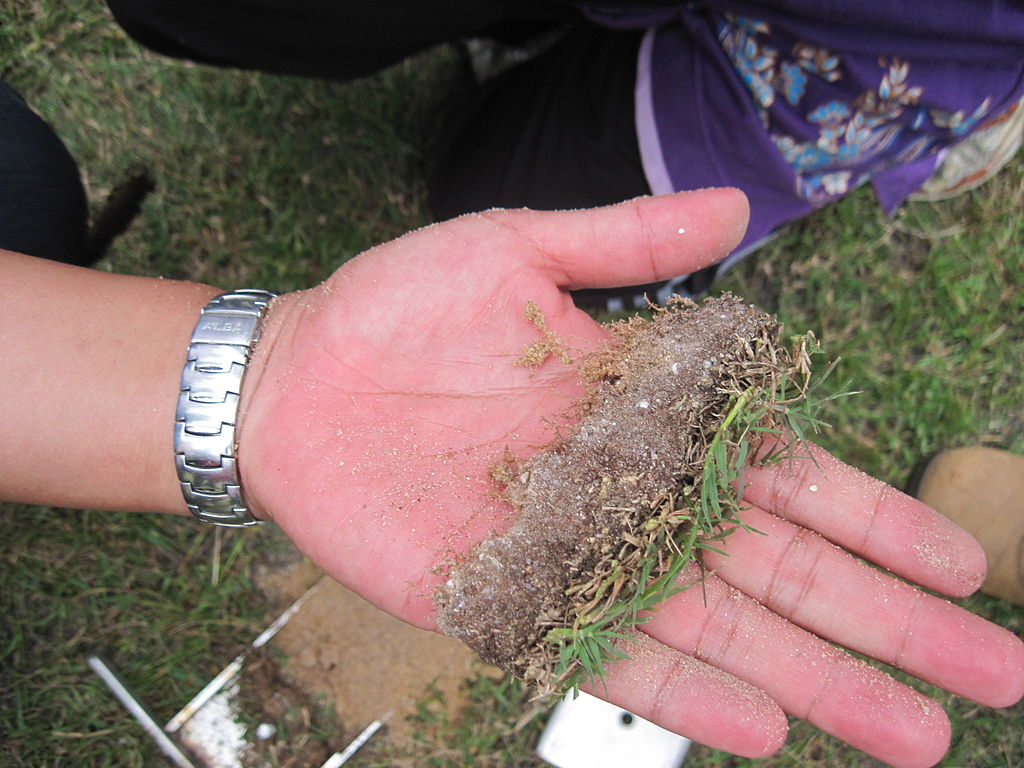Seeding your lawn is one of the best things that you can do to fill in bare spots and help promote a thick and healthy turf. But if you don’t seed at the optimal time, you aren’t going to gain all of the benefits and could just be wasting your time and money.
We find that a fair amount of homeowners assume they can seed at any time of the year, but that’s not really the case if you care about getting the best results.
That’s why we’re talking about the best time to plant grass seed.
If you’re going to go through the trouble to seed, you want to make sure that it’s as effective as possible. We’ll discuss how you can get the most out of this service by not only paying attention to the best time to seed your lawn but also pairing it with lawn aeration.
Pro Tip: The Best Time to Seed a Lawn is the Fall
To give you a quick answer, the best time to seed a lawn is in the fall, when the conditions are optimal for your new grass seedlings to thrive.
Most people don’t realize quite how fragile brand-new grass seedlings are. They can easily dry out in the hot sun or dry ground. But the fall has all the right conditions to get your new grass off to a good start: cooler nighttime air, moist ground, and soil that is still warm.
These are the best possible growing conditions for your new grass seed to germinate and start growing strong roots.

Of course, many homeowners want to seed in the spring, and we’ve written an entire article about why this is not ideal. The two main reasons are the weather and weed control.
In the spring, the conditions are hot and dry and the summer sun is just around the corner (which can completely fry the fragile new growth). These are definitely not the optimal growing conditions for your new lawn.
On top of that, you also will not be able to put crabgrass control products down. That’s because the product will not know the difference between desired turfgrass seed and a crabgrass seed. As a result, it will prevent both from growing. If you were to perform spring lawn seeding, you would have to forgo crabgrass control.
As with most things, there are occasional exceptions as far as when to seed a lawn.
Over the years, there has been a small percentage of new clients who have come to us with lawns in very bad shape (not just a few bare spots, but many). For these clients, we’ll occasionally switch up the plans and seed in the spring.
But this is a rarity. In the vast majority of cases, it just doesn’t make sense.
Pro Tip: Use the Best Grass Seed to Get the Thickest Lawn
In order to get the best results, you’ll not only want to pay attention to when to seed a lawn but also what grass seed you’re using. We’ve written an entire article on the best grass seed to use if you’re looking to get the best results.
As we explain in that article, choosing the best grass seed can be complicated as there are a lot of options.

We recommend Turf Type Tall Fescue, which we explain more in-depth in the article. But it’s important to note that there are significant quality differences, depending on where you get seed from. The professional-grade blend that we use is much higher quality than anything you could purchase in a big box store.
Pro Tip: For Optimal Results, Be Sure to Aerate at the Time of Seeding
It’s also incredibly valuable to have lawn aeration performed at the same time as overseeding.
Lawn aeration is the process of making small holes by pulling out soil plugs (or “cores”) throughout the lawn to allow more oxygen, water, and nutrients to penetrate deep into the soil down to the root zone.
As far as when to seed a lawn, we recommend having it performed following aeration when you’ll be able to achieve the best seed-to-soil contact as a result of the holes that aeration creates. This is another way of ensuring that your grass has optimal growing conditions to fill in the thinned and bare spots in your yard.
Of course, there are other benefits to aeration, as well.

For one, it also helps to reduce soil compaction, which is a common problem due to clay-like conditions. Aeration helps to improve the overall soil structure, making the soil looser. This is important in terms of seeding as rock-hard, clay-like soil is going to leave your seeds stuck sitting on top of it.
But with less-compacted, loose soil, it will get that seed-to-soil contact we mentioned above.

Aeration also plays a role in breaking up thatch. This is important because a heavy layer of thatch (the naturally occurring, dead organic material that often builds atop the soil) can completely defeat the purpose of seeding! If the new seed gets caught up in the thatch layer it’s never going to be able to have the conditions it needs to be able to germinate.
Pro Tip: Be Sure to Keep Up with Ongoing Lawn Care for Your New Lawn
We commend you for paying attention to important details such as when to seed a lawn. By doing so, you’ll be able to get the best possible results. Of course, once your new lawn starts growing, it’s going to also require ongoing lawn care including regular watering.
New seed needs to be watered lightly a couple of times a day to keep the seed moist for the first three weeks. After that, you can move toward every other day for approximately a week to keep the soil moist to a couple of inches below the surface. Ultimately you can transition to twice a week as it starts to mature.
Part of your success will also hinge on using ongoing professional lawn care to ensure your grass continues to get what it needs to thrive. Without a healthy lawn, your grass may succumb to problems like disease, pests, or even environmental stress. But a professional regularly caring for your lawn can help to ensure problems are spotted and addressed early.
We understand that your lawn is important to you and we want to help you get the best possible results. We know that lawn aeration and overseeding with high-quality grass seed can make a tremendous difference in the overall health of your lawn. By taking all the right approaches, you’ll be able to have the lush and healthy lawn you’ve been seeking!
With the right care for your lawn, you’ll gain valuable peace of mind. If you’re interested in having your lawn inspected and its health assured, contact us for a free quote or give us a call at 833-JTE-TREE.
Image Source: thatch




